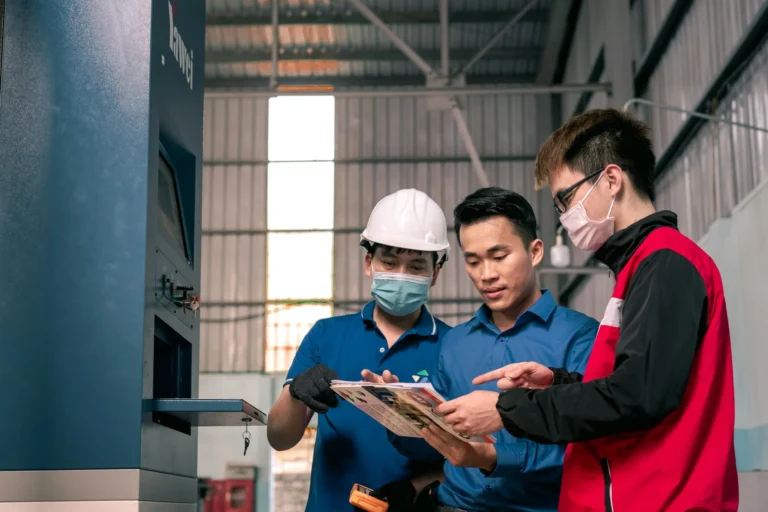
Australia is experiencing rapid population growth, driven by factors such as natural increase, immigration, and internal migration. This demographic shift is reshaping the urban landscape, placing significant pressure on infrastructure, housing, and urban amenities. In this blog, we’ll explore the impact of population growth on urban planning and construction in Australia, examining the challenges it presents and the strategies being implemented to address them.
Understanding Population Growth in Australia:
Australia’s population dynamics have undergone significant changes in recent decades, driven by a combination of factors such as natural increase and net overseas migration. The country’s population growth has been fueled by a steady rise in births exceeding deaths, as well as substantial inflows of immigrants from around the world seeking better opportunities and quality of life in Australia.
According to projections by the Australian Bureau of Statistics (ABS), this trend is expected to continue in the coming years, with the country’s population projected to exceed 30 million by the year 2030. The majority of this growth is anticipated to occur in major cities and urban centres, where economic opportunities, infrastructure, and amenities attract migrants and young families seeking employment, education, and a higher standard of living.
While population growth presents numerous opportunities for economic growth, cultural diversity, and social development, it also poses significant challenges for urban planners, developers, and policymakers tasked with managing the impacts of rapid urbanisation. As cities and urban centres expand to accommodate the growing population, they face pressure to provide adequate housing, transportation, infrastructure, and public services to meet the needs of residents.
One of the primary challenges associated with population growth is housing affordability and availability. As demand for housing outstrips supply in major cities, property prices and rental costs soar, making homeownership increasingly unattainable for many Australians, particularly young people and low-income households. Urban planners and policymakers must grapple with the complex task of balancing the need for housing development with environmental sustainability, heritage preservation, and community cohesion.
Furthermore, population growth places strain on urban infrastructure and services, including transportation networks, utilities, healthcare facilities, and educational institutions. Traffic congestion, overcrowded public transportation systems, and inadequate access to essential services are common challenges faced by rapidly growing cities, impacting residents’ quality of life and productivity. To address these issues, governments and local authorities must invest in infrastructure upgrades and expansion, implement smart growth strategies, and adopt innovative solutions to enhance urban livability and sustainability.
Despite these challenges, population growth also presents opportunities for innovation, economic development, and social progress. By harnessing the talents, skills, and cultural diversity of a growing population, cities can foster creativity, entrepreneurship, and cultural exchange, driving innovation and prosperity. Moreover, population growth can stimulate demand for goods and services, create jobs, and fuel economic growth, contributing to the overall prosperity and well-being of society.
Impact on Urban Infrastructure:
As population growth accelerates in urban areas, the strain on existing urban infrastructure becomes increasingly evident. This strain manifests in various ways, affecting transportation networks, utilities, and public services, ultimately impacting the quality of life and productivity of urban residents.
One of the most pressing challenges associated with population growth is the increased demand for transportation services. Rapidly growing cities often experience traffic congestion, as the number of vehicles on the roads exceeds the capacity of existing infrastructure. This congestion not only leads to longer commute times and increased stress for residents but also contributes to environmental pollution and carbon emissions. Additionally, overcrowded public transportation systems struggle to accommodate growing ridership, resulting in crowded trains, buses, and stations, further exacerbating commuter frustration and discomfort.
Inadequate water and sewage systems pose another significant challenge for rapidly growing cities. As the population expands, so does the demand for clean water and effective wastewater management. Ageing infrastructure and insufficient capacity can lead to water shortages, pollution, and sanitation issues, jeopardising public health and environmental sustainability. In some cases, cities may experience water stress or even water crises, prompting the need for urgent investments in water infrastructure and conservation measures.
Furthermore, the increased demand for energy and waste management services places additional strain on urban utilities. Growing populations require more energy to power homes, businesses, and industries, leading to higher energy consumption and greenhouse gas emissions. Likewise, the generation and disposal of waste increase with population growth, placing pressure on landfill capacity and waste management systems. Without adequate infrastructure and planning, cities may struggle to meet the energy needs of residents and manage waste effectively, leading to environmental degradation and public health risks.
To address these challenges, urban planners must adopt a proactive approach to infrastructure planning and development. Anticipating future population growth and demand for services, planners must design sustainable, resilient infrastructure solutions that can accommodate the needs of a growing population while minimising environmental impacts and resource consumption. This may involve investing in public transportation improvements, expanding water and sewage treatment facilities, upgrading energy infrastructure, and implementing waste reduction and recycling programs.
Moreover, urban planners must prioritise the development of compact, mixed-use communities that reduce the need for long-distance commuting and promote sustainable transportation options such as walking, cycling, and public transit. By designing neighbourhoods that are walkable, bike-friendly, and well-connected to public transportation networks, planners can enhance mobility, reduce traffic congestion, and improve the overall quality of life for residents.
Housing Affordability and Availability:
Population growth exacerbates housing affordability and availability issues, particularly in major cities where demand outstrips supply. Rising property prices and rental costs make homeownership increasingly unattainable for many Australians, leading to housing stress and homelessness.
Urban planners and policymakers are faced with the challenge of balancing the need for housing development with environmental conservation, heritage preservation, and community cohesion. Strategies such as infill development, densification, and urban renewal are being pursued to increase housing supply while minimising urban sprawl and land consumption.
Affordable housing initiatives, inclusionary zoning policies, and government subsidies are also being implemented to improve housing affordability and provide housing options for low- and moderate-income households.
Urban Design and Livability:
As population growth continues to shape urban landscapes, thoughtful urban design and planning become increasingly essential to creating livable, sustainable communities that cater to the diverse needs of residents. To achieve this goal, urban planners must prioritise the development of compact, mixed-use developments that foster walkability, transit-oriented development, and access to amenities.
Compact, mixed-use developments promote efficient land use by integrating residential, commercial, and recreational spaces within close proximity. This approach not only reduces the need for long-distance commuting but also encourages social interaction, economic vitality, and cultural diversity. By creating vibrant, pedestrian-friendly neighbourhoods where residents can live, work, and play, planners can enhance community connectivity and promote a sense of belonging and identity.
Transit-oriented development (TOD) is another key component of sustainable urban design, focusing on the development of dense, mixed-use developments around transit hubs and public transportation corridors. By prioritising public transit and pedestrian infrastructure, TOD reduces reliance on private vehicles, reduces traffic congestion, and promotes sustainable transportation options. Moreover, TOD encourages compact development patterns, reduces urban sprawl, and minimises environmental impacts associated with car-dependent lifestyles.
Access to green spaces, parks, and recreational facilities is essential for enhancing urban livability and promoting physical and mental well-being among residents. Green spaces provide opportunities for relaxation, exercise, and social interaction, contributing to improved public health outcomes and community cohesion. Urban planners must prioritise the preservation and creation of green spaces amid urbanisation pressures, ensuring that residents have equitable access to nature and recreational amenities.
Sustainable urban design principles are integral to mitigating the environmental impacts of population growth and building resilient, climate-resilient cities. Energy-efficient buildings, green infrastructure, and water-sensitive urban design strategies help reduce energy consumption, minimise greenhouse gas emissions, and enhance urban resilience to climate change. By incorporating green building techniques, such as passive solar design, natural ventilation, and renewable energy systems, planners can create buildings that are energy-efficient and environmentally responsible.
Furthermore, green infrastructure, such as green roofs, rain gardens, and permeable pavement, helps manage stormwater runoff, reduce flooding, and improve water quality, thereby enhancing urban resilience to extreme weather events. Water-sensitive urban design principles promote sustainable water management practices, such as rainwater harvesting, greywater recycling, and sustainable drainage systems, to conserve water resources and protect ecosystems.
Infrastructure Investment and Planning:
To address the challenges posed by population growth, governments at all levels must prioritise infrastructure investment and long-term planning. Strategic planning frameworks, such as metropolitan strategic plans and regional growth plans, guide infrastructure investment and development to support population growth while safeguarding environmental and social values.
Collaboration between government agencies, developers, community stakeholders, and the private sector is essential for effective urban planning and infrastructure delivery. Public-private partnerships, community engagement initiatives, and stakeholder consultations facilitate consensus-building and ensure that infrastructure projects align with community needs and priorities.
Innovative approaches to infrastructure financing, such as value capture mechanisms, impact fees, and infrastructure levies, are being explored to fund infrastructure upgrades and expansion without burdening taxpayers.
Population growth presents both opportunities and challenges for urban planning and construction in Australia. While population growth fuels economic growth, cultural diversity, and urban vitality, it also strains infrastructure, exacerbates housing affordability pressures, and challenges urban livability.
Effective urban planning and construction strategies are essential for addressing the impacts of population growth and creating sustainable, resilient cities that meet the needs of current and future generations. By prioritising infrastructure investment, promoting housing affordability, and fostering livable, connected communities, Australia can navigate the complexities of population growth and build a prosperous, inclusive urban future.
Experience streamlined project management with Wunderbuild, enhancing construction efficiency as urban demands escalate. Wunderbuild helps manage complex construction needs effectively, ensuring projects adapt to rapid population growth and urbanization. Embrace the future of construction with Wunderbuild here



